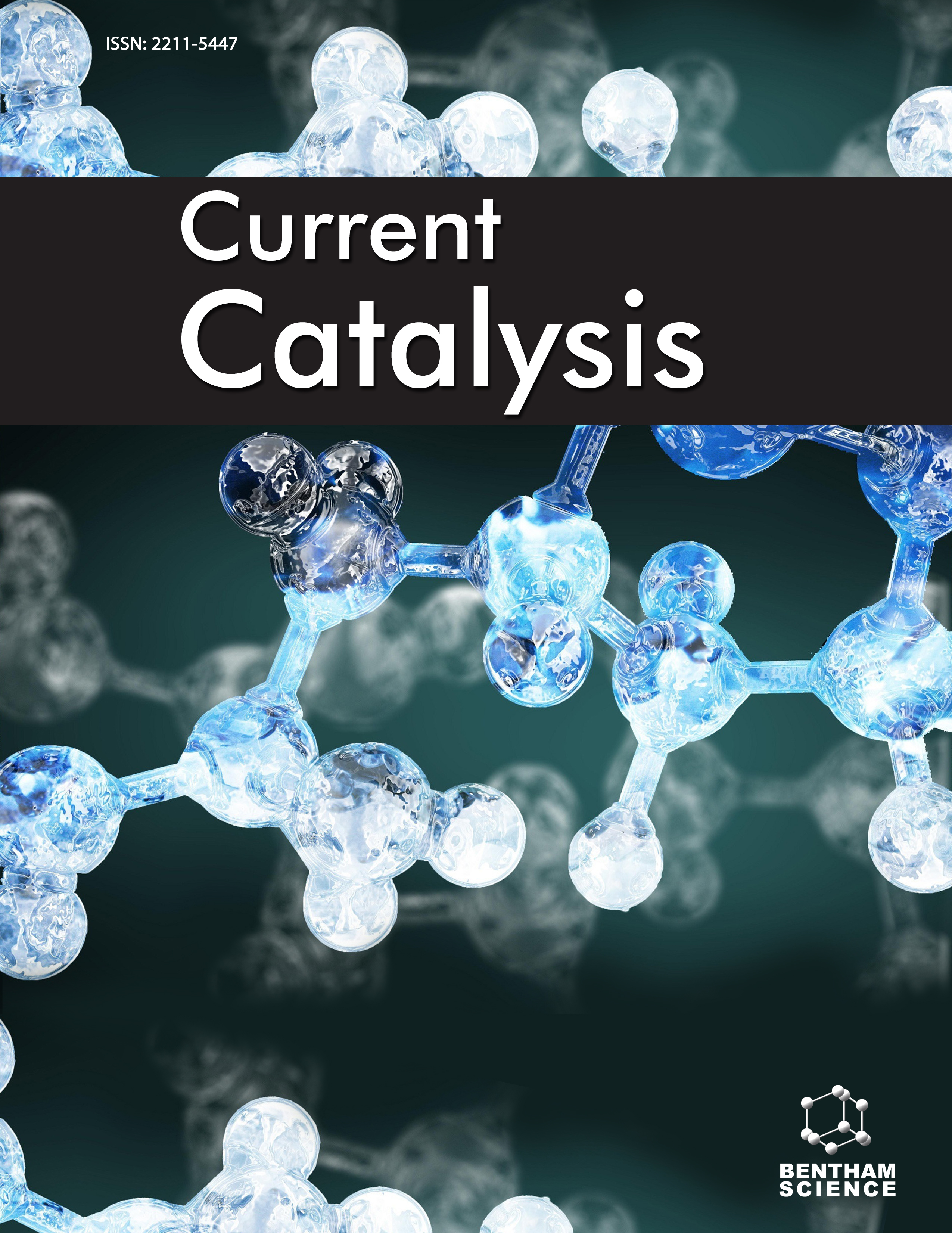- Home
- A-Z Publications
- Current Catalysis
- Previous Issues
- Volume 7, Issue 2, 2018
Current Catalysis - Volume 7, Issue 2, 2018
Volume 7, Issue 2, 2018
-
-
Copper Nanocatalysis in Multi-component Reactions: A Green to Greener Approach
More LessBackground: The role of nanocatalysts holds its wide range of applications in chemical synthesis. Application of nanocatalysts in multicomponent reactions (MCRs) increases the sustainability of processes. Reaction in which three or more reactants combine together to generate desired product without the generation and isolation of any intermediate is known as multi-component reactions. MCRs recently recognized as g Read More
-
-
-
Catalytic Steam Reforming of Acetic Acid: Latest Advances in Catalysts Development and Mechanism Elucidation
More LessAuthors: Filippo Bossola, Sandro Recchia and Vladimiro Dal SantoIntroduction: Sustainable hydrogen production via the catalytic steam reforming (SR) of acetic acid, that is one of the main constituents of the bio-oil, is attracting wide attention and much work is being devoted to the development of always more active catalysts. In the very first studies, noble metal-based catalysts were extensively employed but their cost has made Ni-based systems far more attractive, although the latter are Read More
-
-
-
Photocatalytic Degradation of Dyes: An Overview
More LessIntroduction: The photocatalytic degradation of dyes has been investigated throughout the world irrespective of the level of science in that country. The normal variables considered are the concentration of oxidising species, the concentration of the dye employed, the catalyst used and intensity and source of photons applied for degradation studies. The kinetic data obtained on the decolorization have usually been treated with ps Read More
-
-
-
Preparation of Titanium-containing Hierarchical Zeolite Y and Its Catalytic Performance in Oxidative Desulfurization of Dibenzothiophene
More LessAuthors: Xing Zhang, Kunyue Leng, Changmin Hou and Yinyong SunBackground: Oxidative desulfurization of fuel oils has attracted much attention in recent years. Ti-containing microporous zeolites exhibited good reactivity in oxidative desulfurization of thiophene with small molecular size. However, they were almost not active in oxidative desulfurization of sulfur compounds with relatively large molecular size mainly due to the inaccessibility of active sites located in micropores. To remedy th Read More
-
-
-
New Insights in the Development of Carbon Supported Ruthenium Catalysts for Hydrogenation of Levulinic Acid
More LessBackground: Ruthenium catalysts supported over various carbon materials differing in the nanostructure, grade of graphitization and surface area values have been synthesized and used in the hydrogenation of levulinic acid (LA), biomass platform molecule, in aqueous media. Methods: The prepared Ru catalysts were characterized by temperature programmed reduction (TPR), transmission electron microscopy (TEM) and C Read More
-
-
-
Influence of Metals on Metal Modified ZSM-5 Catalysts to Cracking Selectively Fraction C9+ of Vietnamese Naphtha
More LessAuthors: Thuong T. Vo, Huan Manh Nguyen, Hai Duong Le, Luong Huu Nguyen and Thuan Minh HuynhBackground: In the search of new catalysts for conversion of heavy naphtha fraction (C9+) into high octane number gasoline, metal modified ZSM-5 catalysts were investigated. The result revealed that modification ZSM-5 with metals (Ni, Fe, Zn) increased the C9+ fraction conversion and reduced the gas formation. In addition, hydrogen yield has increased the presence of Ni in the catalysts, whereas the number was reduc Read More
-
-
-
Synthesis of 1,8-Dioxo-octahydroxanthenes and 1,8-Dioxo-decahydroacridines Using an Efficient Cellulose-HClO4 Heterogeneous Catalyst Under Solvent-free Conditions: A Green Protocol
More LessBackground: Various solid acid catalysts are reported in the literature for the synthesis of heterocycles. In present work, we have explored new metal free acid catalyst for the synthesis of 1, 8- dioxo-octahydroxanthenes and 1, 8-dioxo-decahydroacridines under solvent free conditions. Methods: In present manuscript, we have synthesized cellulose perchloric acid (CPA) catalyst by the addition of perchloric acid to cellulo Read More
-
-
-
Synthesis and Characterization Electro Catalytic Al-Ni and Nano Graphite Electrodes for Rechargeable Al Ion Battery
More LessAuthors: Subir Paul and Tanuj KumarBackground: To meet the rising demand for energy at the same time reducing environmental pollution, electrochemical energy synthesis through development of efficient high energetic battery is the need of the hour. The present investigation attempts to develop a new Al ion rechargeable battery by making cathode and anode more electro catalytic. Methods: The electrode Al was replaced by a modified Al-Ni electrode and Read More
-
Most Read This Month
Article
content/journals/ccat
Journal
10
5
false
en


